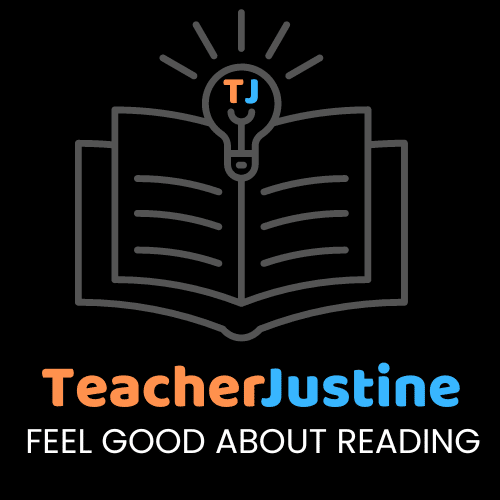Teacher Justine contains affiliate links and is a member of the Amazon Services LLS Associates Program. If you make a purchase using one of these Amazon links, I may receive compensation at no extra charge to you. See my disclosure policy for more information.
What Do Parents Mean By “My Child Needs Help In Writing”?
As an EBLI tutor, parents often say to me, “my child is reading pretty well, but needs help in writing.” “My child needs help in writing” can mean very different things, so the first question I ask parents is what do you mean by writing?
If the child is very young like K-1st, they usually mean handwriting, actual letter formation. If the child is 1st-3rd they often mean spelling. And if they are 4th and up, they might mean composition — idea generation and structuring ideas into sentences and paragraphs.
In this post, I’ll walk you through what writing ‘struggles’ might actually mean, based on your child’s age — and how to get them the right kind of help.
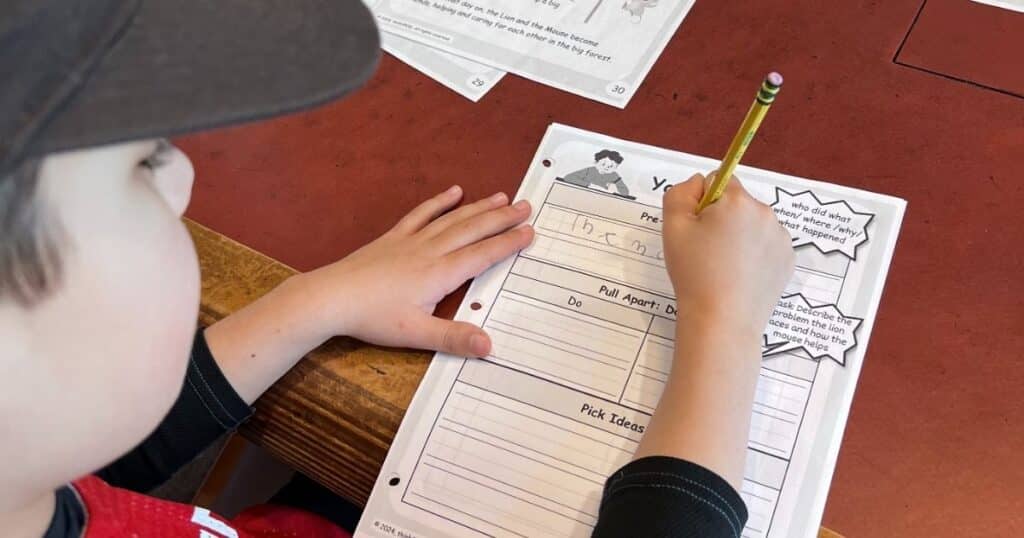
What Does “Writing” Mean at Different Ages?
Writing means different things at different ages — and figuring out what kind of “writing help” your child needs starts with understanding what’s developmentally appropriate.
This guide is here to help you — the parent — start to name and understand what “writing help” might actually look like, so you can better support your child or communicate more clearly with a tutor.
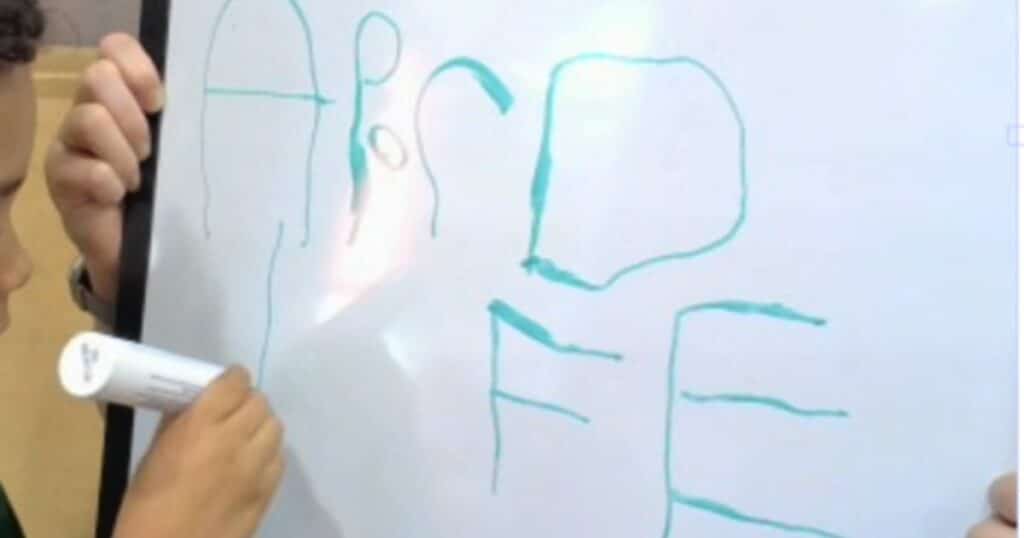
Writing in Kindergarten–1st Grade = Handwriting
At this age, “writing” usually refers to handwriting basics:
- Holding the pencil correctly
- Forming letters clearly and consistently
- Leaving spaces between words
It also includes early sound-symbol awareness — like saying a word aloud and trying to write the sounds they hear. Drawing and labeling pictures is also a key part of writing at this stage.
Sometimes, “writing” for young children also means dictation: the child tells an adult what they want to say, and the adult writes it down. This builds oral language, confidence, and print awareness.
What Parents Often Notice
When parents say “my child needs help with writing” at this age, they’re usually seeing things like:
- Messy or barely readable work
- Hand fatigue after a short time
- Avoiding writing tasks altogether
- An awkward or ineffective pencil grip
- Holding the hand in the air instead of resting it on the page
- Forming letters from the bottom up instead of top down
What Parents Can Do
If this sounds like your child, start by focusing on handwriting mechanics — or let your tutor know that your child specifically needs help with handwriting. That clarity can make all the difference in how support is delivered.
EBLI tutoring is perfect for kids who need help in handwriting because handwriting is part of almost every activity in the EBLI exercises.
👉 To learn more about how correct letter formation (top-to-bottom, left-to-right) helps organize your child’s brain and builds a foundation for future reading and spelling success, check out my post on handwriting support (coming soon).
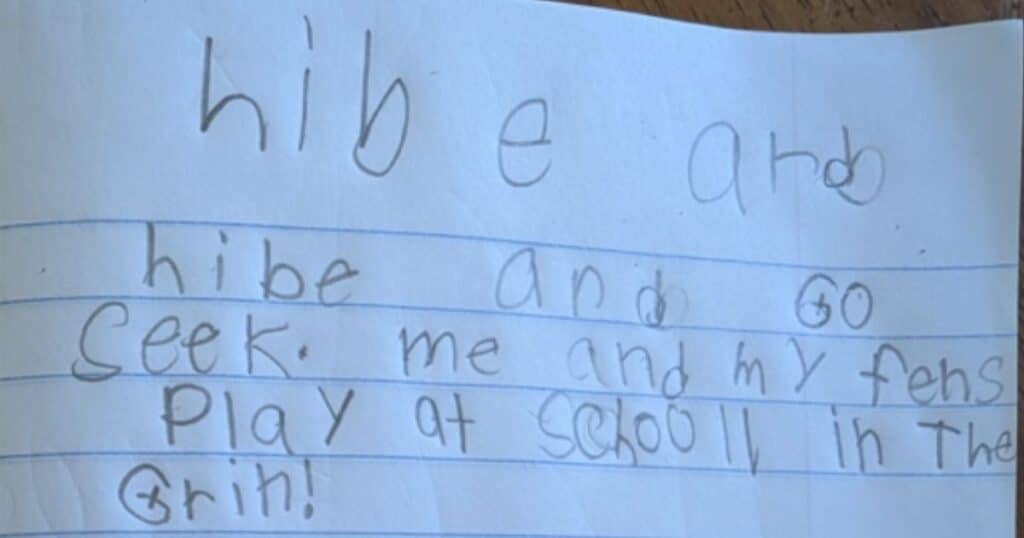
Writing in 2nd-3rd Grade = Spelling
At this age, when parents say “my child needs help in writing,” they often mean their child needs help with spelling.
And that makes sense — English spelling can be confusing, even for adults! This is why:
- English is like a layer cake — made up of multiple languages (Latin, Greek, French, etc.), so its spelling system includes many irregularities.
- It’s not just phonetic — spelling in English also depends on morphemes (meaning units like roots, prefixes, and suffixes). This means kids need more than just phonics — they need morphemic understanding to spell well.
What Parents Often Notice
Many parents feel relieved that their child can read (decode) words…
But then feel alarmed when they realize their child can’t spell (encode) them.
Here’s what you might notice at this stage:
- Still using inventive spelling or basic phonetic spelling using only the sound symbol correspondence learned early on.
- Low confidence and dismissive attitudes (“It doesn’t matter — I’ll just use spell check.”)
- Can decode but can’t encode
- Weak vocabulary affecting word choice
- Struggles to apply spelling patterns across different contexts
📍If you’re noticing these things, you’re in good company.
Spelling often lags behind reading — that’s because reading uses recognition memory, while spelling requires retrieval memory, which is harder and takes longer to develop.
What Parents Can Do
There are things you can do to help your child start remembering spellings more consistently:
- Encourage them to say the word aloud as they write
- Use structured speech-to-print support, not rote memorization
- Teach word parts (like prefixes and suffixes), not just sounds
- Give them lots of chances to write in context (not just word lists)
- Create spelling lists with them from their own writing
EBLI tutoring or using EBLI methods are perfect for helping your child in spelling because EBLI teaches reading through spelling. Every activity is about connecting the sounds we say to the spellings in words we write.
👉 To dive deeper into strategies that work, read my spelling blog posts and check out the Spelling & Writing Tracker — it’s a printable tool I created to support structured, speech-to-print spelling practice at home. You can get it on TPT or here’s a sneak peak:
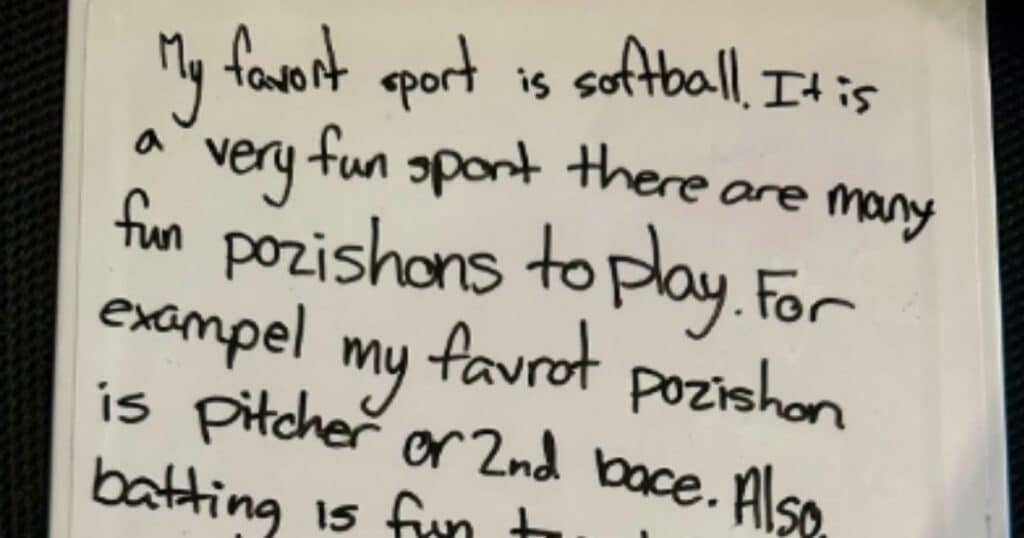
Writing in 4th Grade and Up = Composition
By 4th grade and beyond, when parents say “my child needs help in writing,” they’re often referring to paragraph and essay writing — specifically, their child’s ability to organize ideas, support arguments, and write clearly for school assignments.
What Parents Often Notice
The first red flag might not come from your child — it comes from school.
Maybe you’ve seen comments like:
“Your child has partial ability to locate and cite evidence to support their ideas and opinions.”
Or maybe it’s more subtle — and you start noticing things at home, like:
- Difficulty getting started with writing assignments
- Trouble organizing ideas into logical paragraphs
- Writing that feels unfinished, vague, or disorganized
- Struggling to complete assignments independently
Why Does This Happen?
Here’s the truth:
While reading reform has gained national traction, writing instruction is still all over the place — or completely missing.
Some schools don’t teach writing explicitly at all. Students are told to “just open a Google Doc and write,” with little guidance on structure, clarity, or support.
What to Do
If you’re lucky, your child’s school is teaching the writing process using clear and explicit instruction. But many parents find themselves searching for outside support.
EBLI tutoring and using EBLI methods help kids who struggle in this higher level of writing – thinking, planning, and getting words into sentences and paragraphs. EBLI is great for foundational writing and you can expand it and infuse EBLI into reading, spelling and higher level writing forever.
But at some point, parents are looking for something after EBLI or they need something with more guidance on how to teach the writing process. They are looking for tools, sources, and writing prompts — and that’s where programs like thinkSRSD come in.
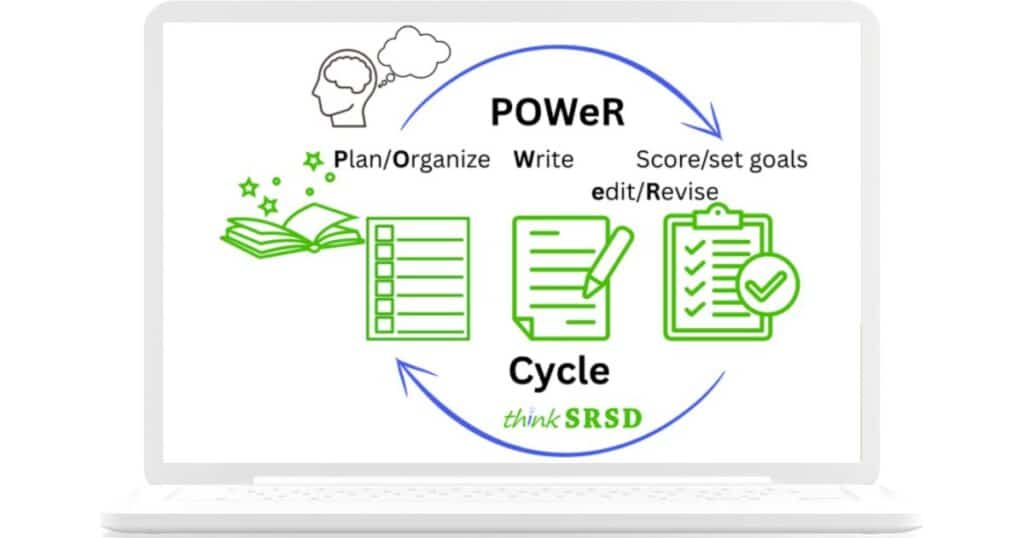
What is ThinkSRSD?
thinkSRSD (Self-Regulated Strategy Development) is a research-backed writing method that teaches students to:
- Understand the prompt
- Plan their response
- Organize ideas clearly
- Find and cite evidence to support claims
- Edit and revise with purpose
- Set goals and stay motivated
There’s strong evidence that thinkSRSD works — especially for students who struggle with writing structure and clarity.
🤝 Why Parents Link thinkSRSD + EBLI
Many parents in the EBLI community have heard that thinkSRSD pairs well with EBLI, and they start searching for a writing tutor who can use both.
You’re not alone in wondering:
- What exactly is thinkSRSD?
- Can it be taught in a tutoring session?
- Is it the right fit for my child?
👉 I’ll be answering all of those questions in upcoming blog posts:
Stay tuned — or join my email list so you don’t miss those posts when they go live.
So that is roughly what writing means at different ages.
💡 Note: These age ranges aren’t rigid — and writing struggles often overlap. A younger child may already be working on composition, while an older one might still need support with handwriting or spelling.
And that’s why it’s so important to look beyond age and focus on what your child can and can’t do yet — so you can meet them where they are and help them move forward.
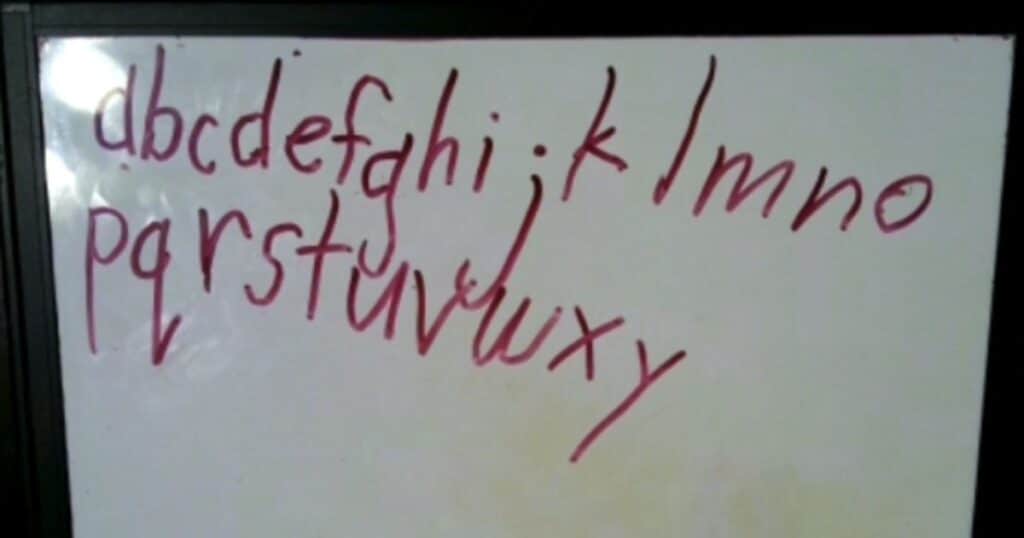
Why This Confusion About Writing Happens
If you’ve ever felt unsure what kind of writing help your child actually needs — you’re not alone. Writing is a big, messy, complex skill with many parts.
Most parents naturally lump all writing struggles together, and it’s not until we dig a little deeper that we realize:
Writing struggles can be mechanical (like handwriting), linguistic (like spelling), or structural (like organizing ideas into paragraphs).
Your child’s age helps give us a clue — but it’s just a starting point.
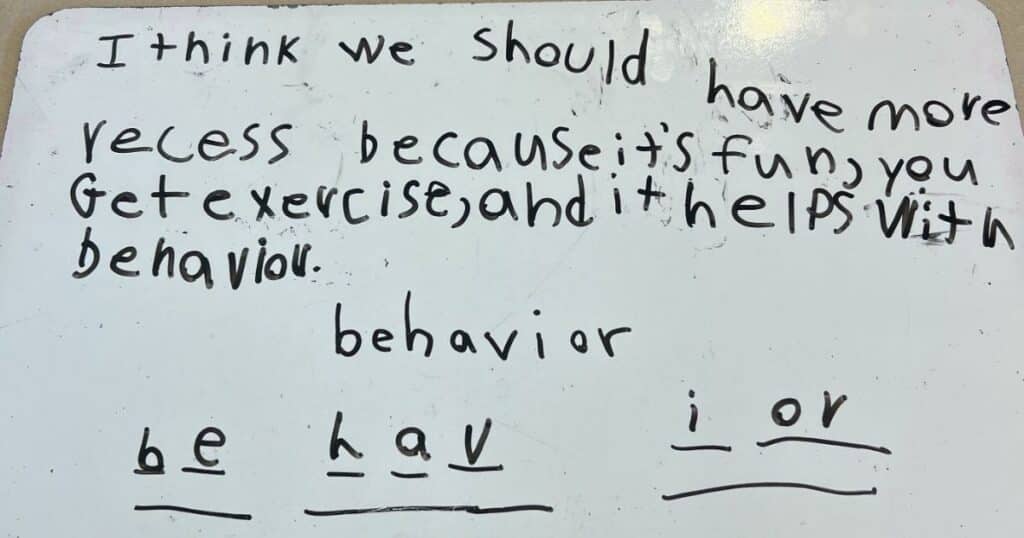
Why I Start With Spelling — Even When Parents Say “Writing”
Even when a parent tells me, “My child is reading fine but needs help in writing,” I usually recommend we start with EBLI first — not structured writing like thinkSRSD right away.
This is why:
- A few EBLI sessions help me figure out where your child really is. And EBLI provides lots of opportunities for sentence and paragraph foundational writing.
- It tells me whether your child is truly ready for structured writing — or if they still need more support with spelling and accurate reading.
- In order to write your ideas onto paper, you need fluent transcription skills – you can’t be bogged down by the mechanics of writing or spending too much time on spelling.
In speech-to-print methods like EBLI, spelling is the pathway to accurate reading.
So if your child struggles with spelling, that’s a signal to me that they may still be struggling with decoding — even if they appear to be reading well.
And unless you’re listening to your child read out loud regularly, you might not even notice it.
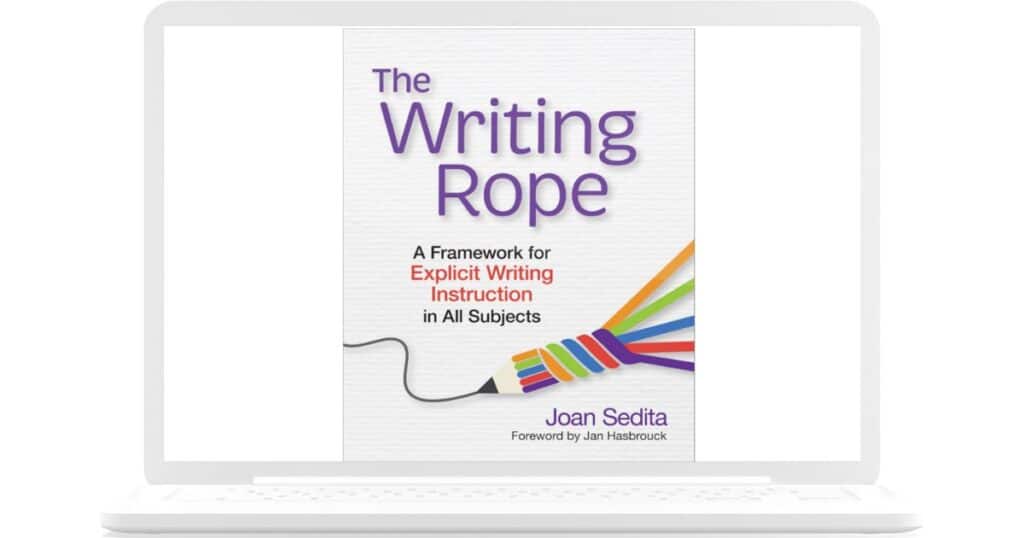
When To Move to Structured Writing
If your child is fluent in handwriting and spelling (meaning spelling is not bogging down what they are trying to say), then move on to structured writing.
If you want to try teaching structured writing to your child, I recommend using The Writing Rope for the big picture and then trying the tools from thinkSRSD, a method designed to help students plan, organize, and communicate their ideas clearly.
But structured writing first requires a solid foundation of handwriting and spelling — that’s how we build confident, competent writers.
What Your Child Might Be Missing
If your child avoids writing, struggles to get started, or seems frustrated when asked to put thoughts on paper — it doesn’t mean they’re lazy or not trying.
It often means they’re missing one or more key ingredients that make writing feel possible and even enjoyable:
The Hidden Building Blocks of Writing
- Vocabulary and background knowledge
Kids need something to say before they can write. Limited exposure to language-rich conversation or reading can make writing feel overwhelming. - Confidence
If writing has felt hard for a long time, kids start to believe they’re “bad at it.” That shuts down motivation and makes it harder to try. - Explicit instruction
Most kids aren’t taught how to plan, organize, or structure their writing. Without clear steps, they feel lost from the first sentence.
💬 If your child is missing one or more of these, they’re not alone — and it’s fixable.
Once we know what’s missing, we can build it back in a way that makes writing feel doable and even fun.
How I Help Students with Writing in Tutoring
If you’re feeling overwhelmed or unsure where to start — you don’t have to figure this out alone.
I work with students one-on-one to identify what kind of writing help they truly need, and then we build a plan that meets them where they are.
Here’s how that usually looks:
EBLI for Spelling and Accurate Reading
Before we tackle structured writing, we often start with EBLI — a speech-to-print approach that strengthens spelling, decoding, and accurate reading.
Spelling is more than a surface-level skill — it reveals a lot about how a child is processing language. When spelling starts to improve, reading accuracy often does too.
EBLI tutoring provides a lot of opportunities for writing of all kinds: handwriting, spelling, sentence and paragraph writing.
Structured Composition
Once a child is spelling confidently and reading accurately, we make writing the focus.
At first we might practice going through the writing process with topics based on personal knowledge or experience. We apply the writing process to simple topics first to learn the stages of thinking, planning, writing and revising.
We learn how to use graphic organizers in the planning stage and how to expand our notes into sentences and paragraphs in the writing stage.
Finally, we apply these skills to writing that is based on analysis and synthesis of information from articles and videos. In other words, writing about reading or writing to learn from content.
We also study mentor texts to learn how good writers structure and enhance their writing.
Structured writing instruction is often missing in schools, but it is what your child needs to do well in in life — and it’s especially effective when paired with a strong foundation in EBLI.
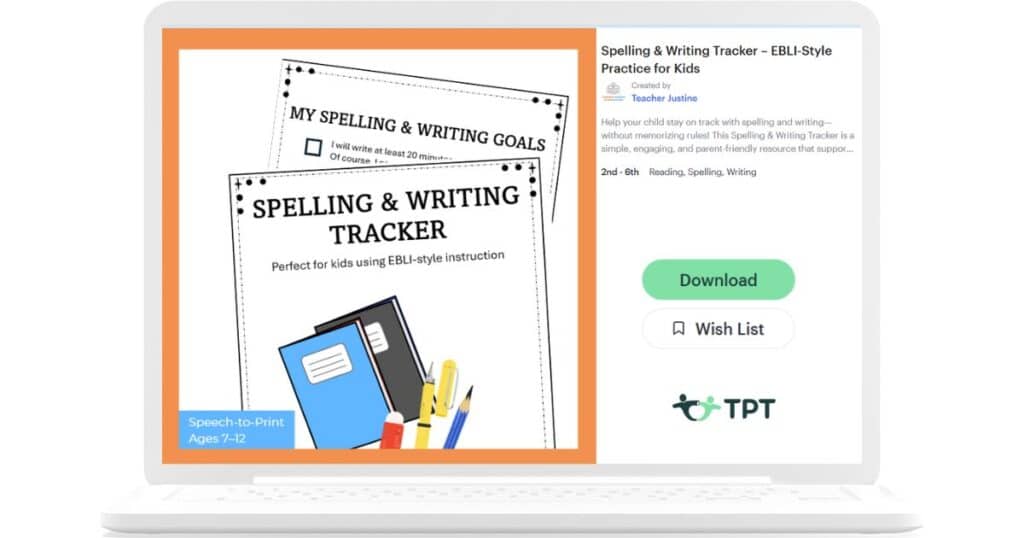
For Extra Support at Home
Some families want a way to reinforce skills between sessions, or aren’t quite ready for tutoring yet. That’s where my Spelling & Writing Tracker comes in — a simple printable tool that helps kids build spelling and writing habits at home.
Final Thoughts: We All Need Help In Writing
Writing is big. It’s complex. And it’s something we all grow through — not out of.
Even as adults, we’re always learning how to express ourselves more clearly and confidently through writing. It’s not something we ever fully master — and that’s okay.
In fact, the struggle is part of the process.
When kids (and adults) write, they clarify their thinking. They come to understand what they believe and how they see the world — through the act of putting words on the page.
✨ Struggling with writing isn’t just normal — it’s necessary.
What matters is how we guide our kids through it.
With the right tools, structure, and support, writing can go from overwhelming to empowering.
You don’t have to figure it all out on your own — and neither does your child.
Ready to Take the Next Step?
- ✅ Download the Spelling & Writing Tracker — for at-home support you can start using today
- 📚 Explore related posts on spelling, writing, and confidence-building strategies
- ✉️ Join my email list to get new posts, tools, and writing tips delivered right to your inbox
